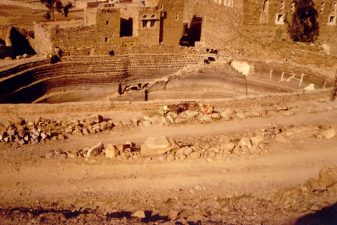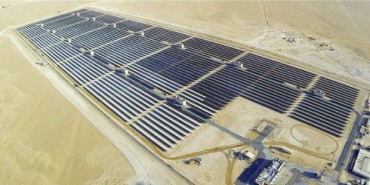 Don’t swat the wasp! Insects are important links to the food web and deserve protection status too.
Don’t swat the wasp! Insects are important links to the food web and deserve protection status too.
As the world begins to pay closer attention to the importance of preserving biodiversity, more has emerged about the Middle East’s wild side. Hundreds of birds flock through the UAE en route from Africa to Asia, while conservation efforts have drawn more negative attention to sharks in the Red Sea.
But less is known about the insect world and why we even care. Often people see a creepy crawly and are moved by some kind of ancient DNA to squish the life out of it. But Anthony van Harten realizes that insects are crucial to maintaining healthy ecosystems and are fighting to protect them in Dubai.
The Beetle and the Wasp
The 2mm long aquatic beetle – Ochthebius wurayah – and the 5mm long wasp, known as a “velvet ant” – Nanomutilla wurayahensis – were discovered in Dubai’s first mountain protected area Wadi Wurayah.
“The findings come as part of an intensive inventory of the arthropod fauna (insects, spiders, scorpions, terrestrial crustaceans) of the UAE that is currently being carried out under the patronage of Sheikh Tahnoon Bin Zayed Al Nayan, member of the Executive Council of Abu Dhabi, ” according to an envearth press release.
UAE’s Anthropods
The project’s research co-ordinator Anthony van Harten has published 3 volumes of Anthropod Fauna of the UAE, without which information it would be impossible to understand which species exist where, or why.
Knowing this, however, is crucial to being able to protect both the arthropods and by extension the region’s unique ecosystem.
Commenting on the discoveries, Anthony van Harten stated: “The only way to protect the enormous amount of insect species from extinction is to preserve the areas that support a diversity of insect species, many of them so tiny that they cannot be seen by the naked eye, and Wadi Wurayah certainly is such an area.”
What’s so special about insects?
According to Dr. Christophe Tourenq,
As predators, preys or detritivores, they are essential elements of the food web. For example, geckos residing within Wadi Wurayah’s mountains are part of the diet of the endangered Wild Cat (Felis silvestris lybica). Geckos feed on beetles, some of which are coprophagous or necrophagous, meaning they feed respectively on the faeces (droppings) or carrion (dead body) of wild cats and geckos. Beetles help then in the decomposing of the organic matter and contribute to the nutrient cycles
Thankfully, the insects and greater species in Wadi Wurayah will have a better chance of survival as a result of the research being conducted, as well as the protected status given to Wadi Wuraya in 2009 by his Highness Shaikh Hamad Bin Mohammed Al Sharqi.
Not a barren land, despite our preconceived notions of Dubai and surrounding emirates, the protected area contains extraordinary diversity as well as a permanent water source that has been vital to special creatures such as the Arabian Tahr and Arabian Leopard for thousands of years.
So, the next time you see a creepy crawly, think twice before stepping on it. Your ultimate survival may depend on it.
images courtesy of WWF
:: envearth
More From the Wild Middle East:
Turkey Helps Syria Revive “Thoth” – The Northern Bald Ibis
Pollution, Nature Reserve and Sea Turtle Estuary All in One (The Poleg Stream)
Nature Iraq’s Conservation in A Combat Zone





Quite a lot of scientists in the Uk are really trying to understand the effects of climate change on the wasp population, in particular Januarys freezing temperatures. UKWaspWatch utilises a bespoke-built application that combines elements of Twitter’s API and the Google Maps API to plot the locations of wasp sightings onto an interactive map by people tweeting when they see a wasp and the severity (on a 1-10 scale from a single wasp sighting to a sting to a large nest). Might be a good idea to get one up and running in Dubai too. have a look though its really quite clever ‘#UKWaspWatch’,
Well of course they are important, a part of the food chain, and were seen as a link to the sun in ancient times…
This, from Ancient Egypt Meaning: It seemed to the ancient Egyptians that the young scarab beetles emerged spontaneously from the burrow were they were born. Therefore they were worshipped as “Khepera”, which means “he was came forth.” This creative aspect of the scarab was associated with the creator god Atum…for more go to: http://www.egyptianmyths.net/scarab.htm